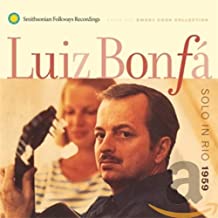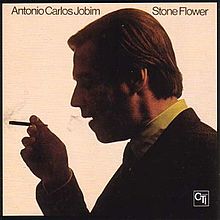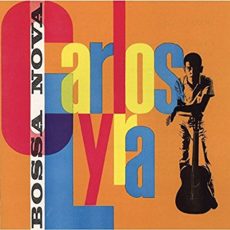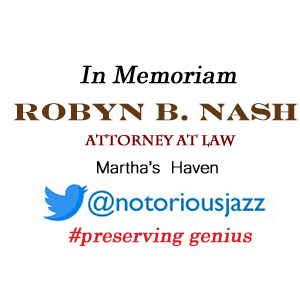
Daily Dose Of Jazz…
Buddy Deppenschmidt was born William Henry Deppenschmidt on February 16, 1936 in Philadelphia, Pennsylvania. His father was a saxophonist and bandleader under the name Buddy Williams, but his mother moved him to Richmond, Virginia when he was four.
Self-taught, he started playing drums professionally while in his teens and then went on the road in the western U.S. with the territory band Ronnie Bartley Orchestra. Returning home, he played with local bands and became the drummer for the Newton Thomas Trio through the mid to late Fifties, which was also the touring rhythm section for the Billy Butterfield Quintet. When the Newton Thomas Trio played the Virginia Beach Jazz Festival, it received rave reviews on a bill that included the Dave Brubeck Quartet and the Charlie Byrd Trio. Two nights later, Charlie Byrd came into the Jolly Roger jazz club where Buddy was playing, and offered him the job as drummer with his trio. He played with the trio at the Showboat Lounge in Washington, D.C. from 1959–62.
In February 1961, while on a goodwill tour sponsored by the U.S. State Department, the Charlie Byrd Trio with Byrd on guitar, Keter Betts on bass, and Buddy on drums, they visited 18 countries throughout South and Central Americas, and Mexico. While in Brazil, he spent his free time with local musicians, teaching them jazz and learning bossa nova. It was his idea to record an album combining jazz and bossa nova with Stan Getz.
After Byrd, Deppenschmidt joined the Tee Carson Trio in the early Sixties, then moved to Pennsylvania and formed the Jazz Renaissance, was also the drummer with the John Coates Trio, toured the midwest and west coast with the Bernard Peiffer Trio and studied with drummer Joe Morello.
He’s worked on A Thousand Clowns, Wall Street, Bossa Nova, The Lake House, and Whatever Works movie soundtracks. He’s played with a who’s who list of jazz musicians from Mose Allison and Chet Baker to Coleman Hawkins and Shirley Horn, Phil Woods and more.
Drummer Buddy Deppenschmidt, biographies are in The Encyclopedia of Jazz in the Sixties and The New Grove Dictionary of Jazz, transitioned on March 20, 2021 in Pennsylvania from complications of COVID-19. He was 85 years old.
More Posts: bandleader,drums,history,instrumental,jazz,music

Daily Dose Of Jazz…
Luiz Floriano Bonfá was born on October 17, 1922 in Rio de Janeiro, Brazil. He studied with Uruguayan classical guitarist Isaías Sávio from the age of 11 and these weekly lessons entailed a long, harsh commute by train, 2 1/2 hours one way and on foot from his family home in Santa Cruz. Given his extraordinary dedication and talent for the guitar, Sávio excused the youngster’s inability to pay for his lessons.
He first gained widespread exposure in Brazil in 1947 when he was featured on Rio’s Rádio Nacional, then an important showcase for up-and-coming talent. In the late 1940s Bonfá was a member of the vocal group Quitandinha Serenaders. Some of his earliest compositions such as Ranchinho de Palha, O Vento Não Sabe, were recorded and performed by Brazilian crooner Dick Farney in the 1950s and his first hit song was De Cigarro em Cigarro recorded by Nora Ney in 1957.
Farney introduced Luiz to Antônio Carlos Jobim and Vinicius de Moraes, the leading songwriting team behind the worldwide explosion of Bossa Nova. He collaborated with them on de Moraes’ anthological play Orfeu da Conceição, which several years later gave origin to Marcel Camus’ film Black Orpheus. For the film he wrote Samba de Orfeu and Manhã de Carnaval, the latter of which Carl Sigman wrote English lyrics and titled the song A Day in the Life of a Fool, which has been among the top ten standards played worldwide, according to The Guinness Book of World Records.
As a composer and performer, Bonfá was at heart an exponent of the bold, lyrical, lushly orchestrated, and emotionally charged samba-canção style that became a highly visible ambassador of Brazilian music in the United States beginning with the famous November 1962 Bossa Nova concert at New York’s Carnegie Hall.
Bonfá worked with American musicians such as Quincy Jones, George Benson, Stan Getz, and Frank Sinatra, recording several albums while in U.S. Also of note is his “The Gentle Rain”, with lyrics by Matt Dubey, and “Sambolero”.
Composer and guitarist Luiz Bonfá, who recorded some five dozen albums, passed away from prostate cancer at 78 in Rio de Janeiro on January 12, 2001.
More Posts: bandleader,composer,guitar,history,instrumental,jazz,music

The Quarantined Jazz Voyager
Stone Flower is the sixth studio album by Antônio Carlos Jobim. Recorded over a period of seven sessions in 1970 on March 16, April 23, 24, 29, and May 8, 20, and 22nd by Rudy Van Gelder at Van Gelder Studio in Englewood Cliffs, New Jersey. The album was produced by Creed Taylor, the album was released on July 7, 1970 on CTI Records. The album peaked at #18 on the Jazz Albums chart in 1971 and #196 on the Billboard 200.
Track Listing | 33:47 All tracks composed by Antônio Carlos Jobim, except where noted- Tereza My Love ~ 4:24
- Children’s Games ~ 3:30
- Choro ~ 2:10
- Brazil (Ary Barroso) ~ 7:25
- Stone Flower ~ 3:21
- Amparo ~ 3:41
- Andorinha ~ 3:32
- God and the Devil in the Land of the Sun ~ 2:23
- Sabiá ~ 3:58
- Antônio Carlos Jobim – piano, electric piano, guitar, vocals
- Harry Lookofsky – violin
- Joe Farrell – soprano saxophone
- Urbie Green – trombone
- Hubert Laws – flute
- Ron Carter – double bass
- João Palma – drums
- Airto Moreira – percussion
- Everaldo Ferreira – percussion
- Eumir Deodato – guitar, arranger
More Posts: adventure,club,genius,guitar,jazz,museum,music,piano,preserving,restaurant,travel,vocal,voyager

Daily Dose Of Jazz…
Carlos Lyra was born on May 11, 1939 in Botafogo, Rio de Janeiro, Brazil. His first song to be recorded was Menina (Girl) in 1954, released as a single by Sylvia Telles in 1955, with Foi a noite (It Was The Night)by Antonio Carlos Jobim on the other side of the record. The composers met for the first time because of this single, when Jobim called Lyra, the other side of the record. Both were composing their own music and writing lyrics and created a colloquial and completely new style. Writing about their own experiences and feelings was a completely different lyrical style from most songs written at that time.
His first compositions from 1954 to 1956 included Quando chegares (When you Arrive), Barquinho de Papel (Paper Boat), Ciúme (Jealuosy), Criticando (Criticizing) and Maria Ninguém (Maria Nobody). By 1957 Carlos began collaborating with the lyricist Ronaldo Bôscoli, songs such as Lobo bobo, Saudade fez um samba (Saudade Made A Samba) and Se é tarde me perdoa (If it’s Late Forgive Me).
In 1958 wrote Aruanda and Quem quiser encontrar o amor (Whoever Want To Find Love), with Geraldo Vandré. In 1960 he started to compose together with Vinicius de Moraes, songs as Você e eu (You And Me), Coisa mais linda (Most Beautiful Thing), Sabe você? (Do You Know), Samba do Carioca (Samba From Rio), Maria Moita (Maria Bush) and many others. They wrote together a musical play in 1962 called Pobre Menina Rica (Poor Little Rich Girl Blue).
In 1959 Carlos and Antonio Carlos Jobim, were the first two music composers, together with lyricists Vinicius de Moraes and Ronaldo Boscoli, to be recorded by João Gilberto on his first LP titled Chega de Saudade, (Enough Of Saudade) which was called the first generation of Bossa Nova.
1961 saw Lyra as one of the five founders of Center of Popular Culture aka CPC, where he started to write songs for cinema and theater. He also wrote the song Influência do Jazz (Influence Of Jazz), one of the songs he sang at the Bossa Nova Concert at Carnegie Hall in 1962.
Composer, lyricist, guitarist and vocalist Carlos Lyra, who penned many bossa nova and Música popular brasileira classics, continues to compose, record, and perform today.
Sponsored By
#preserving genius
More Posts: guitar

Daily Dose Of Jazz…
João Gilberto Prado Pereira de Oliveira was born on June 10, 1931 in Juazeiro, Bahia, Brazil. From an early age, music was a part of his life with his grandfather buying him his first guitar at the age of 14. During high school he teamed up with some of his classmates to form a small band and was influenced by Brazilian popular songs, American jazz, and even some opera, among other genres. After trying his luck as a radio singer in Salvador, Bahia he was recruited in 1950 as lead singer of the vocal quintet Garotos da Lua (Moon Boys) and moved to Rio de Janeiro. A year and a half later, he was dismissed from the group for his lack of discipline, showing up late to rehearsals or not at all.
João Gilberto’s first recordings were released in Brazil as two-song 78-rpm singles between 1951 and 1959. In the 1960s, Brazilian singles evolved to the “double compact” format, and João would release some EPs in this new format, which carried 4 songs on a 45-rpm record. For seven years, Gilberto’s career was at a low ebb. He rarely had any work, was dependent on his friends for living quarters, and fell into chronic depression. Eventually, in 1955 he was rescued from this rut by Luiz Telles, leader of the vocal group Quitandinha Serenaders, where he blossomed musically. His first bossa nova song was Bim-Bom, written as Gilberto watched passing laundresses on the banks of the Sao Francisco River balance loads of clothes on their heads.
This style, which Gilberto introduced in 1957, created a sensation in the musical circles of Rio’s Zona Sul, and many young guitarists sought to imitate it. It was first heard on record in 1958 in a recording of Chega de Saudade, a song by Jobim and Vinicius de Morais. With this success launching his career and the bossa nova craze, João featured new songs by a younger generation of performer/composers such as Carlos Lyra and Roberto Menescal on two more albums. By 1962, bossa nova had been embraced by North American jazz musicians such as Herbie Mann, Charlie Byrd, and Stan Getz, who invited Gilberto and Jobim to collaborate on what became one of the best-selling jazz albums of all time, Getz/Gilberto. Through this album, Gilberto’s then wife Astrud—who had never sung professionally prior to this recording session became an international star, and the Jobim/de Moraes composition The Girl from Ipanema became a worldwide pop music standard.
Gilberto went on to work with Claus Ogerman, Clare Fischer, Caetano Veloso, Gilberto Gil and Maria Bethânia among other collaborations. He won a Grammy Award for Best World Music Album in 2000 for his album João Voz E Violão. Singer, guitarist and composer João Gilberto continued to perform, record and composer until declining health and financial issues took their toll and on July 6, 2019 he transitioned at his apartment in Rio de Janeiro, Brazil. He was 88.






